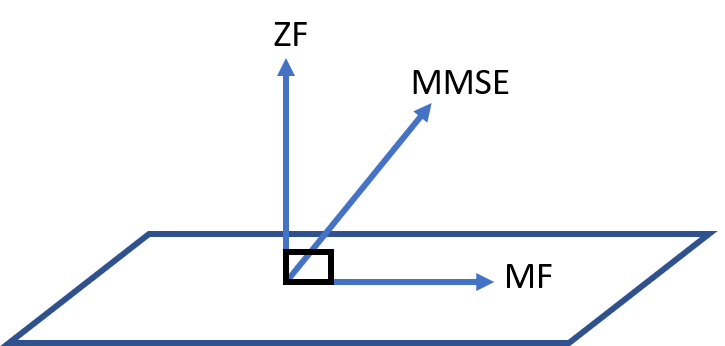Given no formal system model in the question, I will outline in words what each does and the relation between them.
Matched Filter: The MF maximizes SNR when the signal is in additive Gaussian noise. You can go back and look at the derivation of the MF, but it does not include any mention of interference. During the derivation, there is a step where we say we want to maximize the SNR. In vector speak, the post-MF signal vector is in the same direction as it was received. This is unlike the ZF and MMSE which try to decrease interference by rotating the received signal vector to a new direction.
Zero Forcing: The ZF filter tries to force the interference level to zero at all costs. Most often, this means taking an inverse of a matrix (in vector speak, finding a direction perpendicular to the interference). The problem with ZF is called noise enhancement and it comes when the matrix you are taking an inverse of has small eigenvalues resulting in an inverse with large values. Then when applying the ZF processing to the received signal, although the inverse exists and so the interference is forced to zero, the noise is also multiplied by the inverse (which containing large values) and is amplified. This is why the problem is called noise enhancement or amplification.
MMSE: The MMSE filter is a happy medium between the SNR maximizing MF and the interference minimizing ZF receiver as it attempts to optimally (in terms of mean square error between the post-MMSE signal and the transmitted signal) improve SNR and decrease interference (maximizing the SINR). In vector speak, the post-MMSE will be rotated by some amount depending on the levels of interference and noise present.
Relation to each other: This should (hopefully) tie these three together. The ZF and MF are the two extremes, when the SNR is high the ZF out performs the MF because the interference will be the limiting factor. When the SNR is low, the MF out performs the ZF because the noise level is the limiting factor.
The MMSE receiver depends on the levels of interference and noise: in the case that SNR is low, then the MMSE receiver looks more like a MF, and in the case that SNR is high, then the MMSE receiver looks more like a ZF receiver.
This picture is all over textbooks talking about these three but its easier for me just to re-create it so I don't have to cite it. This gets at the relationship between the three and shows how the MMSE would rotate towards the ZF as SNR increases and towards the MF as SNR decreases.


